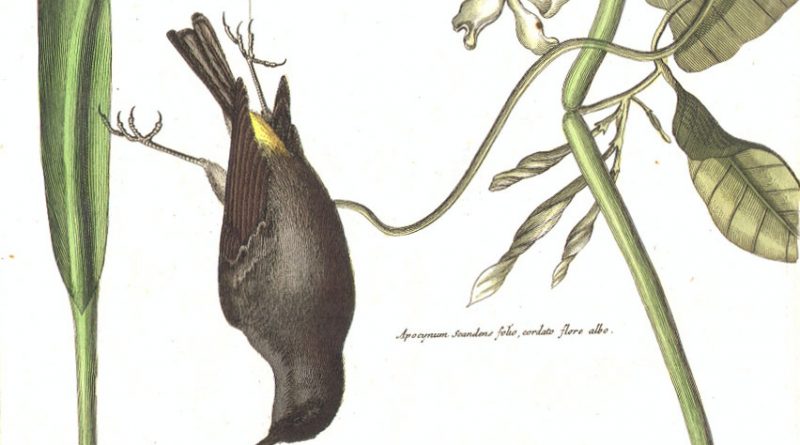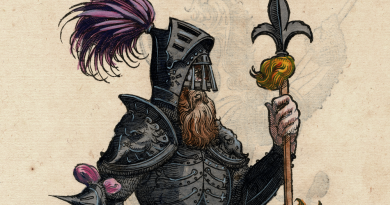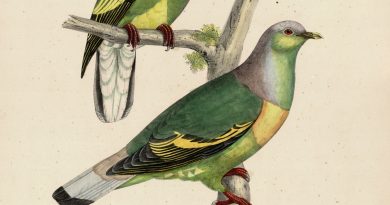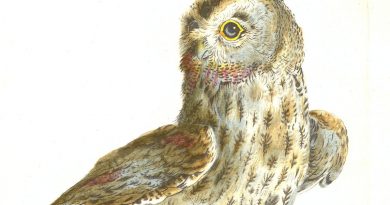Seligmann after Catesby – Parus Uropygeo Luteo: The Yellow-Rump
Finely handpainted copperplate print engraved by Seligmann for his Sammlung verschiedener auslandischer und seltener Vogel based on the original plate from Mark Catesby’s “Natural History of Carolina, Florida and Islands. Seligmann’s re-engraving rearranges the position of the plants and flowers to frame the bird.
Format: Small folio, 9.5 X 15.25 inches
Condition: Clean and bright. Two small spots just below the flower, and a few faint smudges in the outer margins. Sheet may have been cut slightly from original size, but full platemark is there.
1749 - 1776
The Natural History prints of Mark Catesby and George Edwards were re-engraved between 1749 and 1776 by Johann Michael Seligmann a talented Nürnberg engraver and publisher, in some instances embellishing the plates with different plants after his own inspiration. Seligmann published them together in a beautiful illustrated book with German texts entitled ‘Sammlung verschiedener ausländischer und seltener Vögel’ (Collection of different rare and foreign birds).
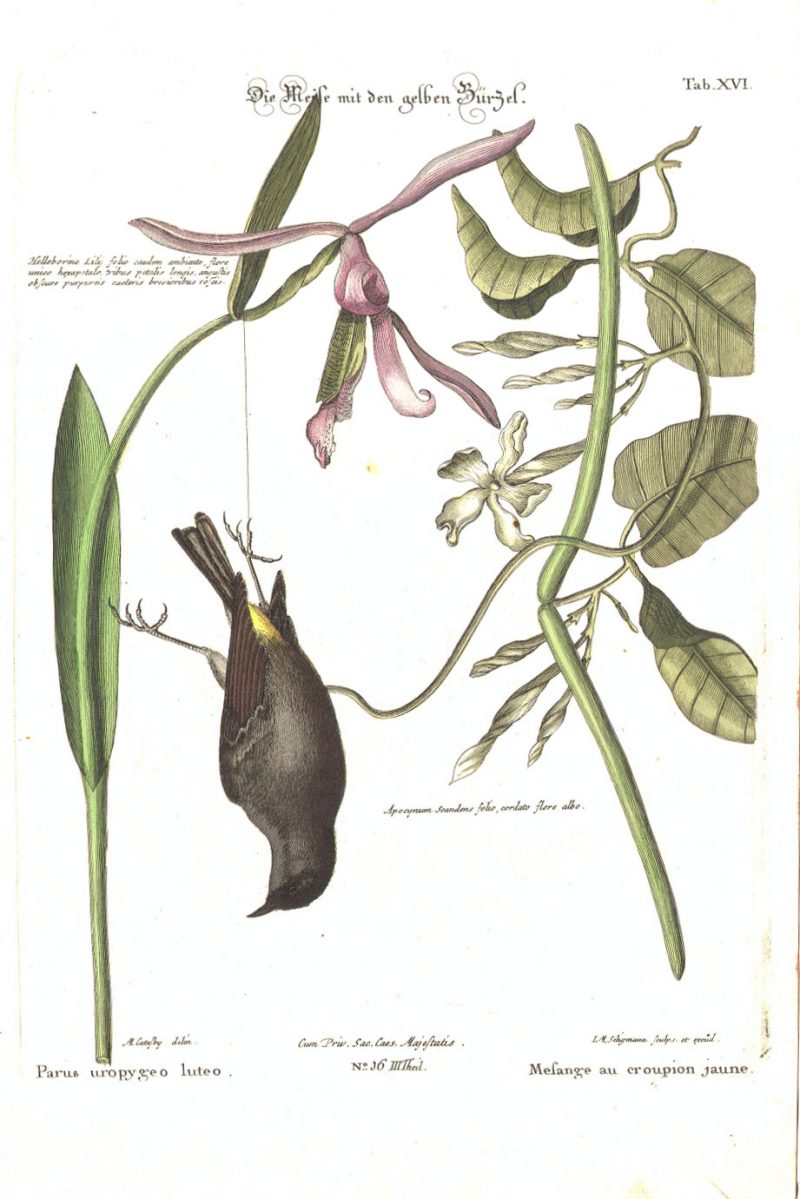
The Text in the Original Volume of Mark Catesby’s Natural History of Carolina, Florida and the Bahama Islands read as follows:
Parus Uropygeo Luteo: The Yellow-rump.
This is a Creeper, and seems to be of the Tit-kind. The most distinguish’d Part of this Bird is its Rump, which is yellow. All the rest of the Feathers are brown, having a faint Tincture of Green. It runs about the Bodies of Trees, and feeds on Infects, which it pecks from the Crevise of the Bark. The Hen differs little from the Cock in the Colour of its Feathers. They are found in Virginia.
Helleborine Lilii folio caulem ambiente, flore unico hexapetalo, tribus petalis longis, angustis obscure purpureis, caeteris brevioribus roseis: The Lilly-Leaf’d Hellebore.
This Plant has a bulbous Root; from which arises a single Stem of about a Foot high, encompassed by the Bottom-part of one Leaf as by a Sheath. At the Top grows the Flower, composed of six Petala; three of them long, and of a dark purple Colour; the other three shorter, of a pale Rose-Colour, and commonly turning back, with a Pistillum in the Middle. It grows in wet Places.
Apocynum Scandens folio, cordato flore albo: Dogs-Bane.
This Plant climbs upon and is supported by Shrubs and Trees near it. Its Leaves grow opposite to each other, on Foot-stalks less than an Inch long. The Flowers grow usually four or five in a Cluster, are white, and consist of five Petala, succeeded by long cylindrical Pods, growing by Pairs, containing many flat Seeds not unlike the Rest of the Apocynums. It grows on most of the Bahama Islands.

